Here’s how it usually works when you go to volunteer in an animal shelter: Fill out a long application. Wait.
Maybe hear back about a volunteer orientation to be held in the next two months. Maybe be told there are no upcoming orientations.
Eventually attend a 3-hour seated orientation in a room with a screen and a canned presentation. Wait.
Get invited to start volunteering. Show up. Feel really confused. Try to figure it out. Get told by (insert any person here) that you’re breaking one or more rules.
Maybe walk some dogs or pet a cat. Either stick it out—all you assertive types—or walk away and spend your valuable free time elsewhere because that whole experience took a lot of time and just felt bad.
Important to note: Volunteer coordinators are, more often than not, amazing people. They’re innovative, kind, good listeners, and people who truly care about both pets and humans.
The fact that your volunteer program is terrible isn’t their fault. Being a volunteer coordinator is one of the most important, and hardest, jobs in the shelter. So let’s just take a minute to say thank you to animal shelter volunteer coordinators. We love you.
The trouble is, they’re powerless over the system they’ve been thrown into—and that old system is plagued by arbitrary rules, barriers of every kind, lack of resources, red tape, and long waits at every turn.
Because of this, volunteer coordinators are stuck in an endless cycle of high-volume recruitment, stale onboarding and training processes, and a weeding out process that means only about 10% of people who want to volunteer ever make it through the hoops required to get that t-shirt and name badge.
Fixing this is going to take a total refresh and rethinking of volunteer programs. Here are just a few of my ideas for how we transform the old volunteer system into a brand new world of people helping pets—one free of arbitrary barriers and confined roles.
1. Volunteer drop-in hours on evenings and weekends.
Anyone can come and volunteer, with no training required. During these times, staff and volunteers can talk about how they can become part of the formal volunteer program and share the opportunities that are available.
2. Volunteers can foster any pet, any time.
I mean, can you imagine a bigger perk? Volunteers can be enrolled as fosters as part of the volunteer enrollment process so no additional paperwork is needed.
3. Volunteers are recruited to solve the greatest challenges.
Long stay dog enrichment and marketing. Socializing fearful cats and kittens. Bottle-feeding babies as they enter the clinic. Helping people get found pets home without those pets entering the shelter. Assisting pet owners with rehoming their own pets in lieu of shelter surrender. Contributing to social media.
The list of things volunteers could be doing to solve problems is endless. What if our entire volunteer program was built on identifying expertise and passion so we could direct volunteers into helping where they are most needed?
4. Volunteer-led leadership.
The volunteer programs of the future need more staff resources and more volunteers at the helm. Volunteer mentors can train new volunteers, run specialty volunteer programs targeted at at-risk groups of pets, and provide support and guidance to volunteers.
5. Volunteers are trained in customer service, safety, fear-free handling, and culture.
Most programs spend very little time in any of these areas, which can lead to volunteers becoming disgruntled and burned out.
6. Volunteers have a clear process for sharing complaints and concerns, and these are taken seriously by shelter leadership.
Volunteers are invited to be part of solving every problem they identify and the shelter transparently shares the challenges and opportunities so volunteers can realistically spearhead change.
7. The organization says yes to volunteer coordinators and yes to volunteers.
The single, greatest problem in volunteer programs today is our tendency to say no to volunteers for almost every reason imaginable. We have to say yes or work to get to yes, or at least a middle ground.
8. Scrap rules and other barriers that stand in the way of volunteers giving their all.
Volunteers can bring their family members and even other pets, depending on their role and the capacity of the shelter. Volunteers are not subjected to arbitrary screening processes like background checks. Volunteers do not have to make an up-front commitment to serving for six months. Volunteers can expect they’ll be met with kindness by other volunteers and staff.
9. Volunteers are expected to follow the same cultural expectations as everyone else in the organization and are held accountable to treat all staff and members of the public with respect, kindness, and humility.
In animal shelters, we must embody the belief that all are welcome and that must mean all. This ethic must also extend to all of the animals in our care.
10. Finally, to fix volunteer programs, we need to totally rethink how we recruit helpers and the inherent bias and discrimination built into our current processes.
We make it hard to help and we subject volunteers to scrutiny that we ourselves could not withstand. We need to address how our beliefs, practices, and biases drive who can and cannot volunteer to help .
These are a few of my ideas. What are yours? Share them here! And here’s where you can check out the HASS Volunteer Integration Toolkit—which will help shelters get volunteers fully integrated into driving forward the mission, vision, and values of your organization. The toolkit lists out some new types of positions volunteers can play at your organization, as well as tips and tools for recruiting volunteers, setting expectations, and evaluating your current volunteer program. Take a look, and get started!








